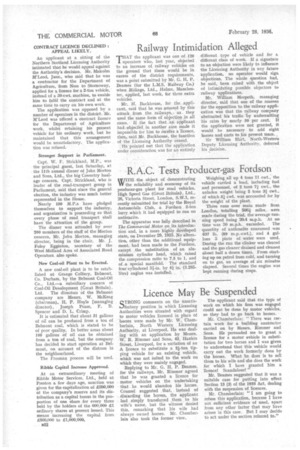R.A.C. Tests Producer-gas Fordson
Page 36

If you've noticed an error in this article please click here to report it so we can fix it.
WITH the object of demonstrating the the
and economy of its producer-gas plant for road vehicles, High Speed Gas (Great Britain), Ltd., 26, Victoria Street, London, .S.W.1, recently submitted for trial by the Royal Automobile Club, a Fordson 2-ton lorry which it had equipped to run on anthracite.
The apparatus was fully described in The Commercial Motor on its introduction and, in a more highly developed state, on December 29, 1933. No alteration, other than the additional equipment, had been made to the Fordson, except the substitution of an aluminium cylinder head, which raised the compression ratio to 7.5 to 1, and of a special manifold. The standard four cylindered 3Z-in. by 4i in. (3.28litre) engine was installed. .
Weighing all up 4 tons 11 c.,vt., the vehicle carried a load, including fuel and personnel, of 2 tons n; cwt, the unladen weight being 2 tons si cwt.. of which Si cwt. was accounted for by the weight of the plant Three runs over main roads from London, totalling 506k miles, were made during the trial, the average-running speed being 20.4 m.p.h. At no time was 30 m.p.h. exceeded. The quantity of anthracite consumed was 637 lb. (69 m.p.-cwt.), and 4 gallons 3 pints of water were used. During the run the clinker was cleared and the gas cleaner drained and cleaned about half a dozen times. From starting up on petrol from cold, and turning on to gas, an average of six minutes elapsed. Several times the engine was kept running during stops.




























































































